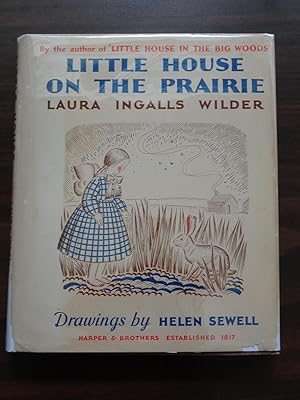What’s it supposed to mean, to be American these days? White
supremacists are loud & proud at the highest level of government. Oligarchs
quietly funnel fortunes into campaigns against the public interest. The chief
executive and his minions gleefully disrespect entire populations of (usually
brown) human beings. A shameful number of people don’t even know that Puerto Rico
is part of the US … Being an American can feel, well, ugly.
Since the US was founded, Native people and people of color have dealt with definitions of Americanness that excluded and marginalize them and in the case of Native peoples, strip them of sovereignty, autonomy, and culture.
So it’s been hard to review the new picture book Americans by Douglas Wood (Simon & Schuster, 2018). Wood and
illustrator Elizabeth Sayles are clearly calling children’s attention to the
UNITED part of “United States”: “Americans share certain ways of doing and
being that hold us all together.”
The book communicates on several levels: full-page
illustrations, smaller spotlight illustrations, text, and several pages in the
back explaining the illustrations.
The first double-page spread begins, “Americans love.” The text
goes on, “We love our ideals of human dignity and freedom…” then mentions
families, neighbors, friends, and the beauty of the land. Several pages later is, “One thing Americans do really well
is disagree.” Images there refer to the Boston Tea Party, public protests for women’s
suffrage, civil rights, the labor movement, peace movements, and LGBTQ rights.
One child-figure carries a Black Lives Matter placard.
So where are the Indigenous people in Americans?
·
In the cover illustration: Black Elk (Oglala
Lakota) is one of 7 public figures depicted. Explanatory text in the back notes
that he witnessed the defeat of Custer, spoke out against forcing Native people
from their lands, and told his life story in Black Elk Speaks. With him are Woody Guthrie, John Chapman (Johnny
Appleseed), Eleanor Roosevelt, Neil deGrasse Tyson, Michelle Obama, and…. Laura
Ingalls Wilder?! What the actual heck. Given how Wilder wrote about Native
people, her presence in the cover illustration positions Native people as
objects of a conflicted white gaze. (Black Elk Speaks is itself a problematic product of a non-Native scribe/filter/editor.)
·
On the “Americans love” pages about beauty of
the land: spot illustration labeled “Totem Pole (Tlingit) of the Pacific
Northwest.” Explanatory text in the back basically says what totem poles are.
I’m not in a position to judge the accuracy of that text, but I know there’s
more to Tlingit totem poles than that. So I wish the author and illustrator had included their sources.
·
On the “Americans believe” pages about the First
Amendment, and freedom to worship: spot illustration of “Pueblo Eagle Dance”. The author doesn’t
specify which Pueblo, and that’s a problem, especially since in the back pages,
it’s called “Native American Eagle Dance” – far too general. Debbie sees some
other important shortcomings that we can go into at another time. The
explanation emphasizes that the US government outlawed Native religious
practices until 1978 (with follow-up legislation in 1993), which is important
stuff for kids to know: the US ideal of religious freedom has always been
selective.
And that’s it for the intentional representations of
Indigenous people.
So, where AREN’T Native people in Americans?
·
“Sometimes Americans fight” depicts the
settler revolution against Britain, the Tuskegee airmen, and some WWII scenes.
Not surprisingly, it doesn’t acknowledge the longest fight of all --
settler-colonial warfare against Indigenous people that eventually involved
Native nations from sea to sea.
·
“But Americans also make peace.” It’s just as
well that those pages don’t depict the US military signing treaties with
Indigenous nations – treaties that the government broke as soon as settlers
wanted the land and other resources.
·
The “Americans disagree” page doesn’t refer to
any influential protests specific to justice for Native people, like the
occupation of Alcatraz or Standing Rock. But it does include the Boston Tea
Party, during which colonizer men dressed in facsimiles of traditional Native
clothing while protesting taxes.
·
“Americans choose” shows a wagon train on the
Oregon Trail, in the heart of Native lands, the heart of their existence -- but we
don’t see any Native people on these two pages. And the back-matter explanation
doesn’t mention Native homelands, or the fact that Native nations, in order to survive,
resisted the settler-colonizer invasion. Was that “a choice”? Maybe so, but not
much like the “choices” depicted in spot illustrations (a “Vote” button, a
young woman in a graduation cap).
·
The “Americans make mistakes” pages show the
Dust Bowl, a child in a Japanese internment camp, Lincoln signing the
Emancipation Proclamation, and children wearing protective gloves while cleaning
a polluted river. There’s no acknowledgement that systemic greed, bigotry,
racism, classism, sexism, and short-sightedness are foundational problems, deeply rooted in “American”
society. They have spawned terrible “mistakes” like
water pollution and slavery -- not to mention genocide against Indigenous
people. And indeed, Americans doesn’t
mention it.
Americans doesn’t
entirely erase Native people, but it relegates them
to spots on the historical landscape, footnotes in a narrative that
embraces an ideal of “acceptable differences.” It barely hints at the complex and
painful relationship between the US and Indigenous nations/peoples, and turns away from the challenge of acknowledging that larger story.
Americans as a social studies offering nods in the direction of a few serious issues, but it seems to me to fall short of opening readers' eyes to ugly but real aspects of Americanness -- like racism, bigotry, genocide, greed for resources, exceptionalism that rationalizes bad behavior -- that kids will have to see if they are to fully grasp what it means to be “an American” now.
--Jean Mendoza
















